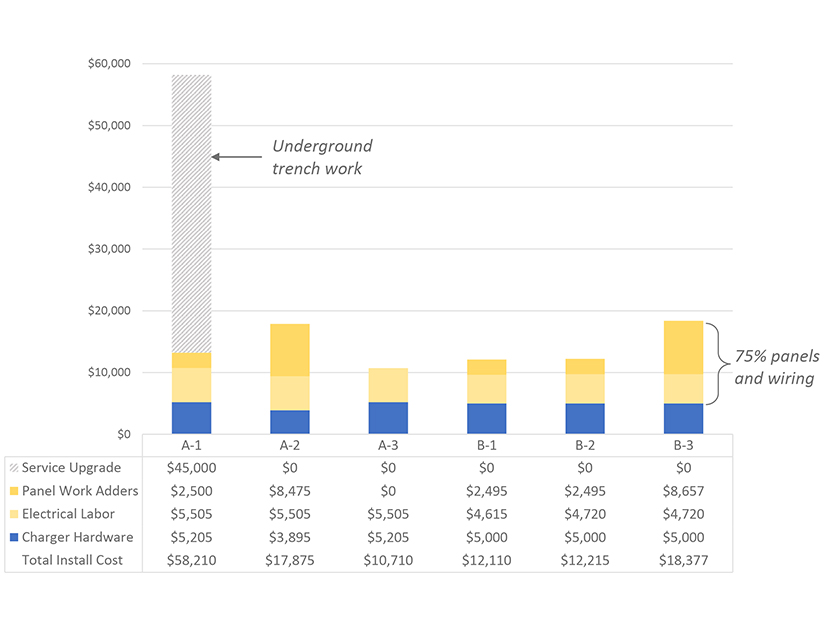
Interest is growing in bidirectional charging from vehicle batteries, but utilities and homeowners have different perspectives on the technology, speakers said during a webinar exploring the challenges of the systems.
Utilities are interested in vehicle-to-grid (V2G) charging, in which energy stored in the battery of an EV such as a school bus is harnessed to enhance grid reliability.
But homeowners are more interested in vehicle-to-home (V2H) charging, in which they can use their electric vehicles as a backup energy source for their homes in case of an outage, a Pacific Gas and Electric (NYSE:PCG) official said.
“We’ve seen vehicle-to-home be kind of a bit more of the leading reason why customers get into the V2X space,” said Chris Moris, principal for grid innovation at PG&E.
“I just don’t think the average consumer, when they buy an electric vehicle, they’re really thinking about the electric grid,” Moris said. “They’re thinking more about the reliability, how I can power my home.”
Moris was one of the speakers during a Feb. 8 webinar hosted by the California Energy Commission (CEC) and ElaadNL, an EV charging innovation center led by a coalition of Dutch grid operators. The collaboration between the CEC and ElaadNL is an outgrowth of a partnership between California and the Netherlands to work on climate goals.
Much of the focus of the webinar was grid codes: technical specifications regarding connections to the electrical grid.
“For many of you who need to connect to the electricity grid for charging infrastructure, you may think, ‘Well, how hard can it be?’” said webinar speaker Lonneke Driessen, director of standardization at ElaadNL.
But ElaadNL is increasingly getting feedback about the challenging and diverse grid codes, Driessen said, and “they may become an impediment to the rapid adoption of V2G.”
ElaadNL is working to “harmonize” grid codes as part of a three-year European project called SCALE (Smart Charging Alignment for Europe), aimed at advancing smart charging infrastructure and facilitating the mass deployment of electric vehicles.
V2G ‘Stalemate’
Another webinar speaker, Jeffrey Lu with the CEC’s vehicle-grid integration unit, discussed the potential for breaking through a “stalemate” related to grid codes and V2G charging.
In California, Rule 21 covers requirements for smart inverters used in vehicle-to-grid charging.
While Rule 21 includes a standard from the Institute of Electrical and Electronics Engineers, IEEE 2030.5, as its default, “the EV and charging industries have not adopted this communication protocol,” Lu said in his presentation. Instead, the industries have been using the Open Charge Point Protocol (OCPP) and ISO 15118 for communications between the charging equipment and the network, and the charging equipment and the vehicle, respectively.
The use of OCPP and ISO 15118 doesn’t prevent V2G in California in direct-current systems, which are typical when the inverter is part of the charging equipment. But the charger manufacturers may face additional certification burdens if using those standards, CEC’s Fuels and Transportation Division told NetZero Insider.
The situation is even more complicated for alternating current (AC) V2G systems, which are used when the inverter is on-board the vehicle. Rule 21 does not currently allow AC vehicle-to-grid charging, CEC said, and a certification pathway under discussion may require IEEE 2030.5, which the EV industry hasn’t adopted.
But Lu said during the webinar that efforts are underway to update OCPP and ISO 15118, which may help them meet Rule 21 requirements.
“These updates to OCPP and ISO 15118, paired with regulatory acceptance, can help to break through a V2G stalemate,” Lu said, describing his comment as a proposal for industry to explore.
In addition, Lu said, “the updates to globally aligned protocols may support greater V2G adoption, implementation and economies of scale.”
Cost Challenges
Moris at PG&E said vehicle-to-home charging presents additional challenges because the system can switch from on-grid operation to off-grid — or islanded — mode. He said the company is conducting pilot tests to study the island-transition issue.
“There’s this unique point in time where there’s a transition between on-grid to off-grid,” Moris said. “And that’s an area where our distribution planners need to see a little bit more on how that safely happens and how that energization works.”
In one pilot study, in partnership with General Motors and Ford, six homes were equipped with vehicle-to-home charging systems. Among five of the homes, the cost to install the systems ranged from about $10,000 to $18,000. Charging equipment accounted for 20% to 30% of the total cost; remaining costs were for wiring and panel upgrades.
For the sixth home, trench work was required, which brought the total cost to $58,000. That’s an issue that could crop up for other homes with 100-amp service, Moris said. Collaboration among utilities, car manufacturers and charging vendors is needed to bring V2H costs down, he added.
Moris also proposed that automakers and EV charging vendors collaborate to create lab space where interoperability can be tested. In addition, Moris said, pathways should be explored in which V2G capability is available by default.
“What would it mean for every car to support V2G out of the gate?” he said.



